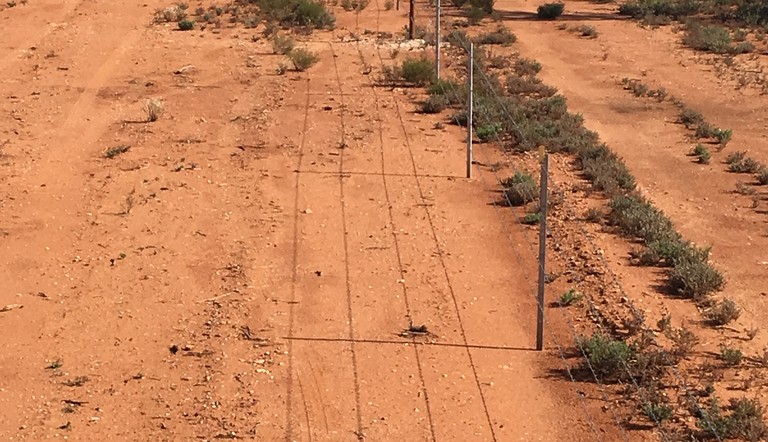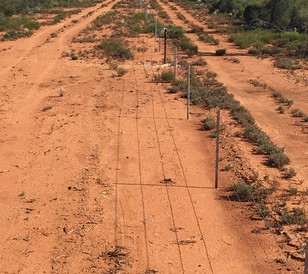
Long-term residual herbicide puts new fences in better shape

The construction and ongoing early conditions for fence lines has been assisted by the arrival of long-term soil residual herbicides such as Uragan®, helping to clean up areas prior to installing fences and controlling grasses, broadleaf weeds and regrowth shrubs along fence lines for several years.
The Group C, pre-emergent herbicide contains 800 g/kg of bromacil and can be applied to graded or bare areas as fences are built.
“In addition to controlling weeds and shrubs for several years, applying Uragan also results in greatly reducing the weed seed bank, providing further control for years to come,’’ said Bevan Addison with Adama.
“Once it rains, Uragan washes into soils and becomes activated.’’
Bevan said recent seasons had shown various cases where Uragan was providing long residual control, also extending through summer to control problem summer weeds that often invade fence lines.
“Farmers in agricultural regions have used the herbicide for both internal and external fence lines and firebreaks, however the benefits also extend to pastoral areas,’’ he said.
“Regular spraying of fence lines is not a simple task and new fences can often be ruined in a few years by regrowth shrubs. This regrowth represents a fire hazard that can destroy fences and stock grazing close to fences can also cause problems.
“Typical pastoral fences can cost close to $5,000 per kilometre and even higher in more intensive situations, so the protection of using a long-term residual herbicide is money well spent.’’
In the agricultural region, the long-term fence line weed control provided by Uragan is also helping in the fight against herbicide resistant weeds.
Bevan said Uragan, which had low mobility in soils, offered a different herbicide group for resistance management. It can control grass and broadleaf weeds, including glyphosate-resistant weeds, longer than any other herbicide, thereby reducing the need for multiple herbicide applications.
Where there are emerged weeds at the time of application, Uragan can be applied in combination with a knockdown herbicide such as Spraytop® (paraquat) or glufosinate, which also helps to relieve the pressure on glyphosate.
Bevan said controlling weeds along fence lines also was vital for successful insect management.
“Entomologists have shown that fence line weeds harbour insects and can act as ‘red mite (red-legged earth mite) highways’, providing an avenue for insect movement around farms. This is concerning considering the increase in red mite insecticide resistance in various areas.’’
“The weeds can also harbour aphids, diamondback moth (DBM), hoppers and an array of other pests depending on the weed spectrum.’’
Bevan said the extended residual control with Uragan offered an alternative strategy to growers for fence line spraying.
“If it suits their management, growers can get out there prior to seeding with this herbicide and get their fence lines, firebreaks and roadways sprayed,’’ he said.
“Getting good application also doesn’t require high costs for fence lines. A ute-mounted sprayer with small boom or specialty offset nozzles will cover a lot of country.’’
Bevan said while farmers and pastoralists were spraying, they could also consider using Uragan to protect infrastructure such as tanks and solar bores, where long grass can place valuable assets at risk of being impacted by fire.
For further information on Uragan pre-emergent herbicide, growers, advisers and agronomists can contact their local Adama representative.
Pictured (foreground) in pastoral country near Kalgoorlie in Western Australia shows the fence line weed and shrub control provided by Uragan herbicide two-and-a-half years after its application.
Pictured (foreground) near Moora in Western Australia shows the strong fence line weed control provided by Uragan herbicide three years after its application.
